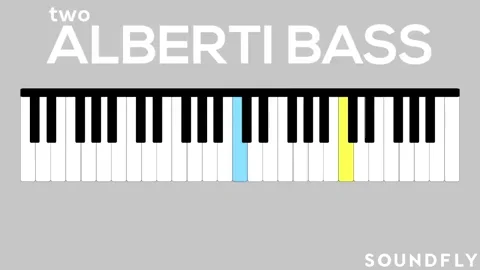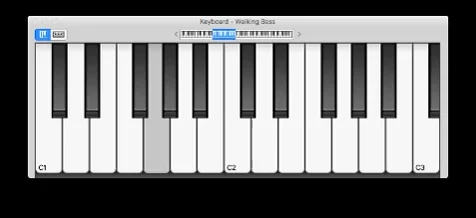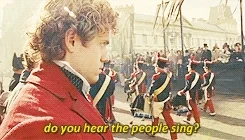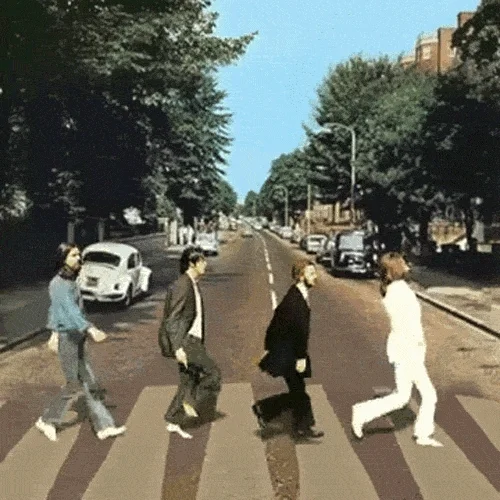Mickey Hansen
AP Music Theory 🎶
72 resourcesSee Units
2.12: Texture Devices
The texture of a musical passage is based on the manner in which its layers are produced and distributed and how how they interact to form the totality of sound.
In addition to monophony, homophony, and polyphony, other texture devices include the following:
- Alberti bass: is a broken chord (arpeggiated chord), placed in the bass, to create a moving figure. Take a look below!

- Walking bass: a bass line that "walks" through the tones of a scale for each corresponding chord.

- Imitation: new musical material that repeats previous melodic material, but can be transposed or inverted, retaining its original character.

- Countermelody: played simultaneously to the principal melody and used as a complementary voice.

- Solo: strut your stuff, you're the only one in spotlight! A solo can be joined by background music or nothing at all.

- Soli: the plural form of a solo in Italian 🇮🇹, which means many people taking a solo together.

- Accompaniment: When there is a solo going on, the rest of the musicians performing background supportive music is called accompaniment.

- Doubling: when a musical part is copied and played simultaneously in another voice or instrument.

- Ostinato: a continually repeated rhythmical or musical passage.

- Tutti: another Italian 🇮🇹 word that means all voices or instruments are making music together.

🦜 Polly wants a progress tracker: If you are singing in a school choir, what are the various textures that you may encounter in your own vocal part?
Browse Study Guides By Unit
🎵Unit 1 – Music Fundamentals I (Pitch, Major Scales and Key Signatures, Rhythm, Meter, and Expressive Elements)
🎶Unit 2 – Music Fundamentals II (Minor Scales and Key Signatures, Melody, Timbre, and Texture)
🎻Unit 3 – Music Fundamentals III (Triads and Seventh Chords)
🎹Unit 4 – Harmony and Voice Leading I (Chord Function, Cadence, and Phrase)
🎸Unit 5: Harmony and Voice Leading II: Chord Progressions and Predominant Function
🎤Unit 7 – Harmony and Voice Leading IV (Secondary Function)
📝Exam Skills
📆Big Reviews: Finals & Exam Prep

Fiveable
Resources
© 2023 Fiveable Inc. All rights reserved.